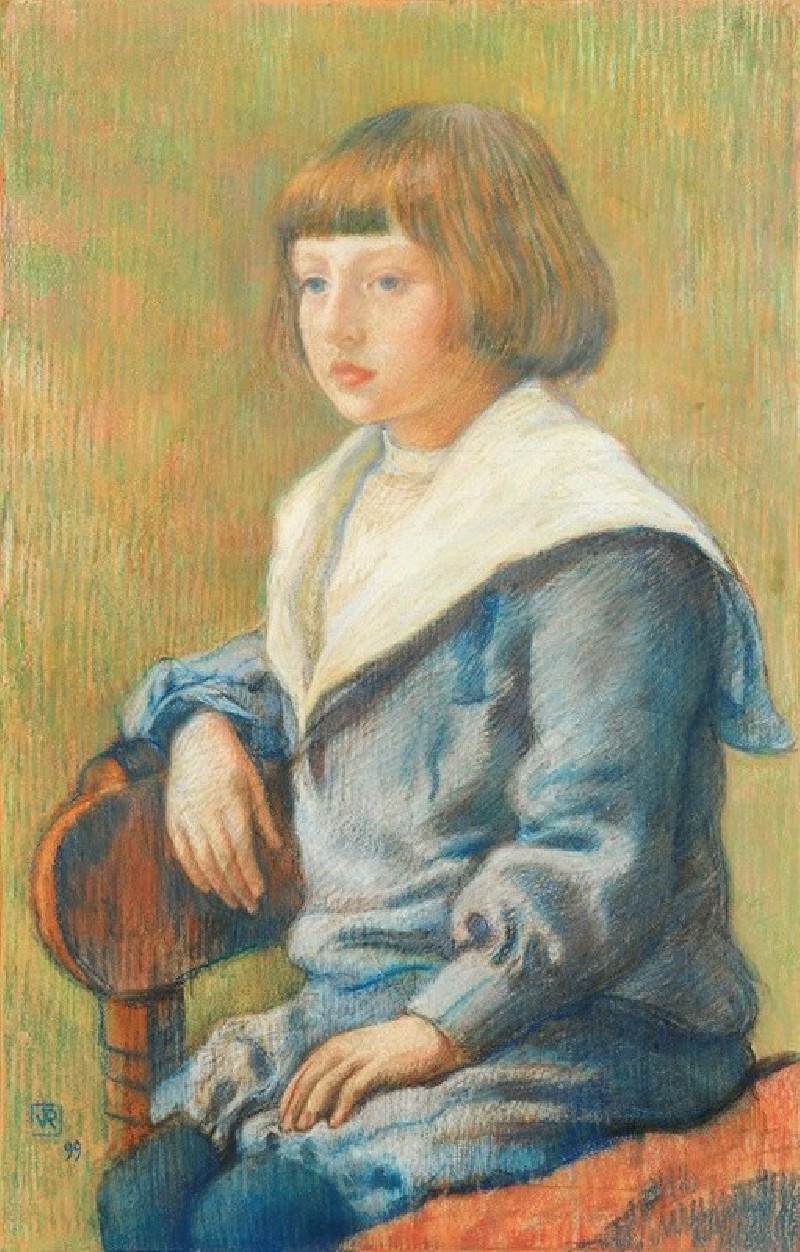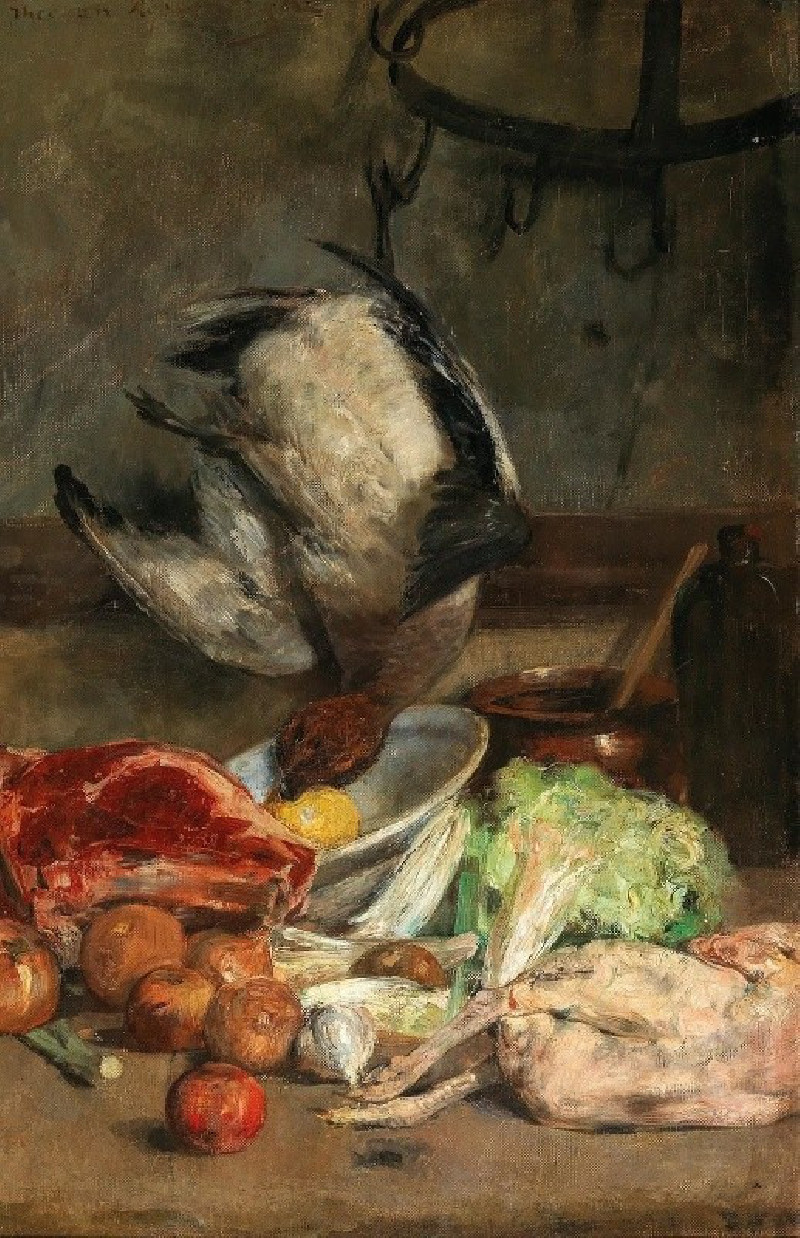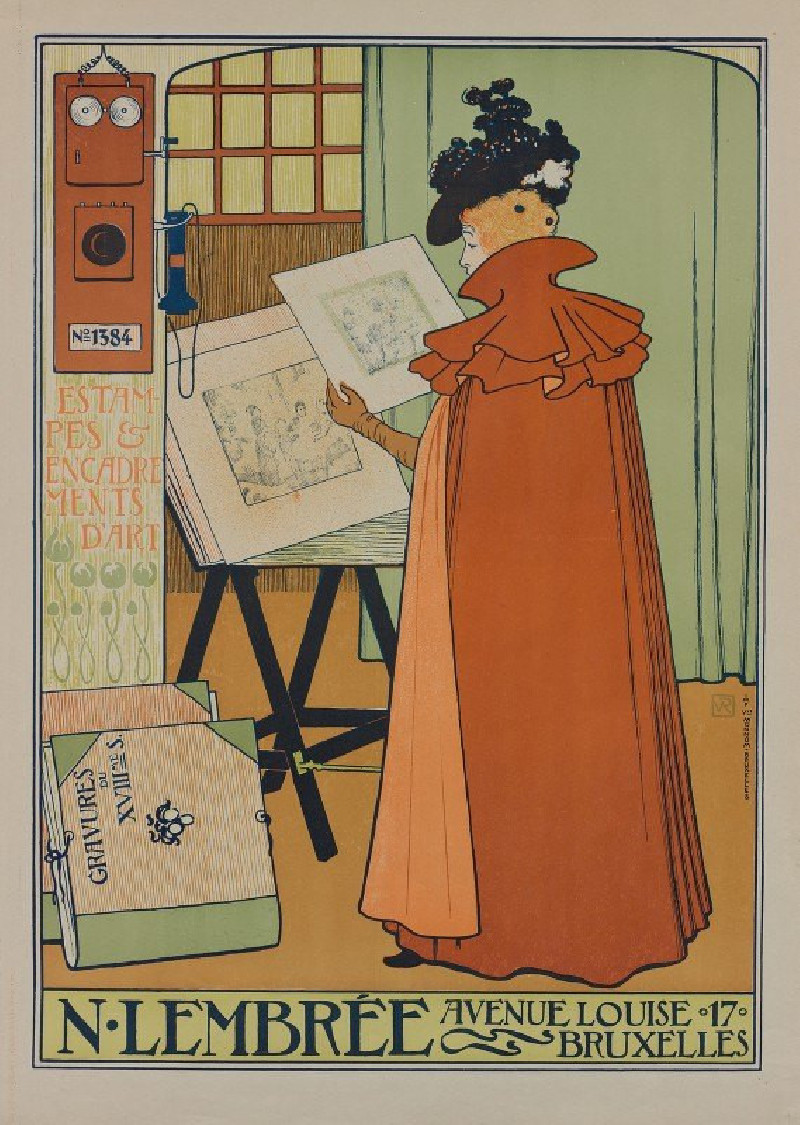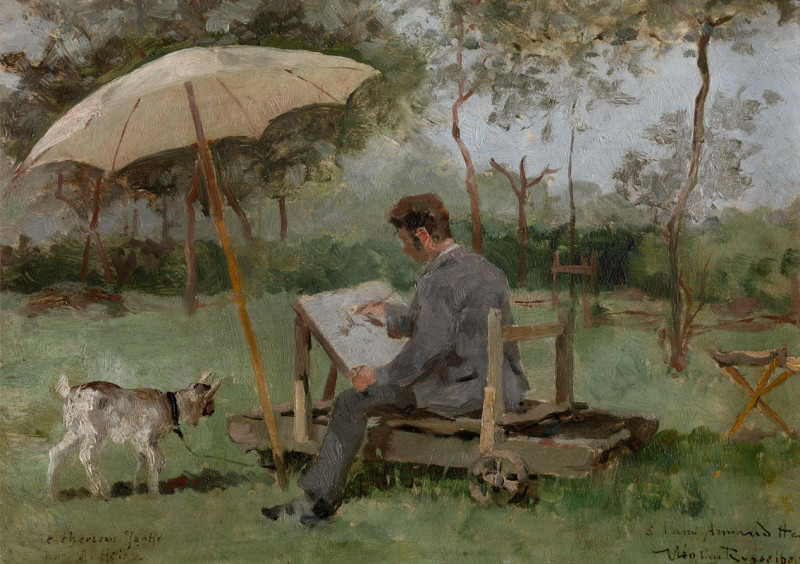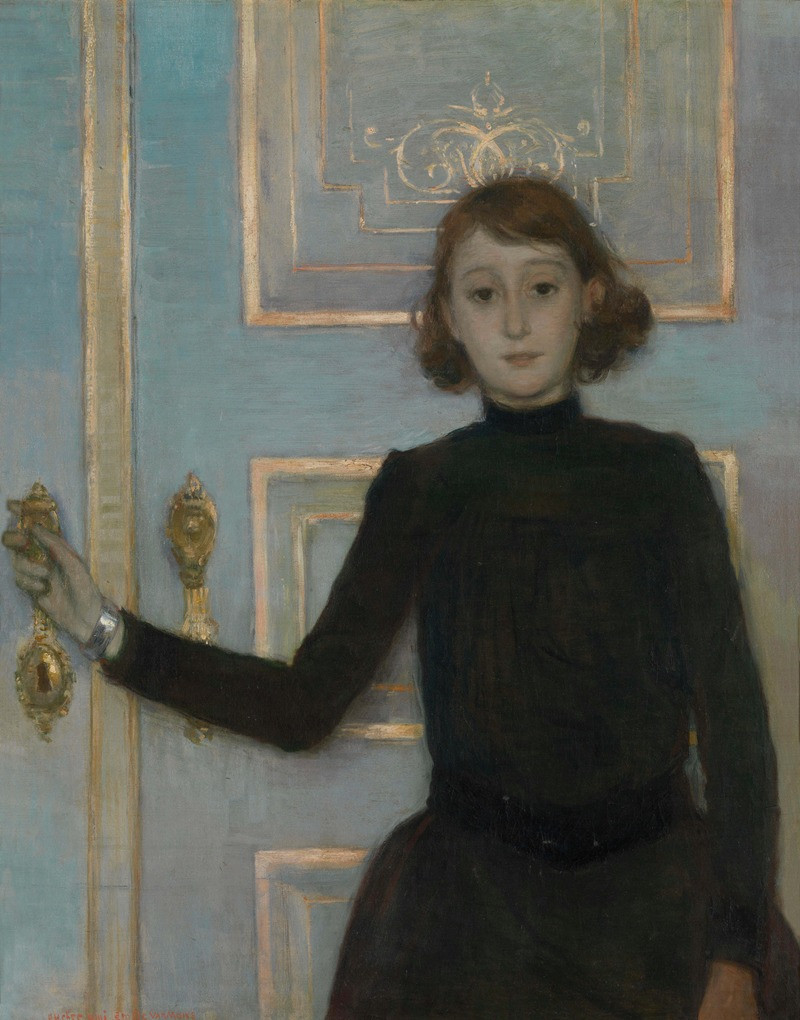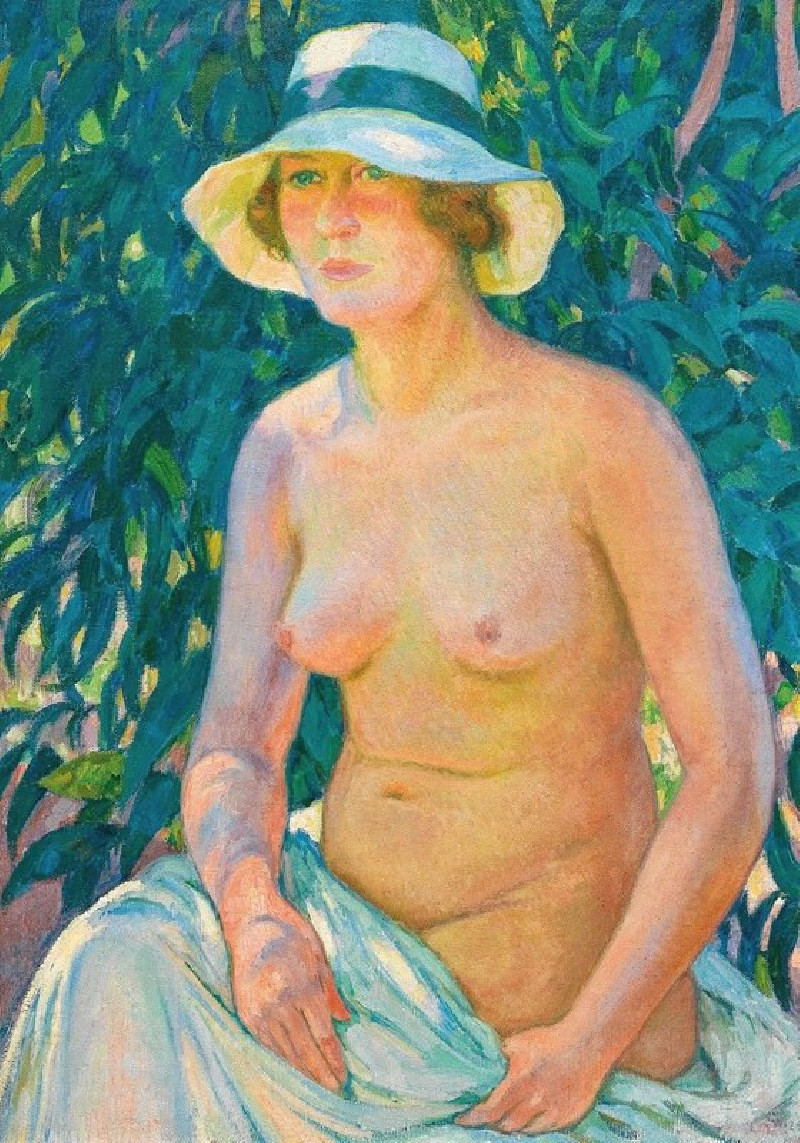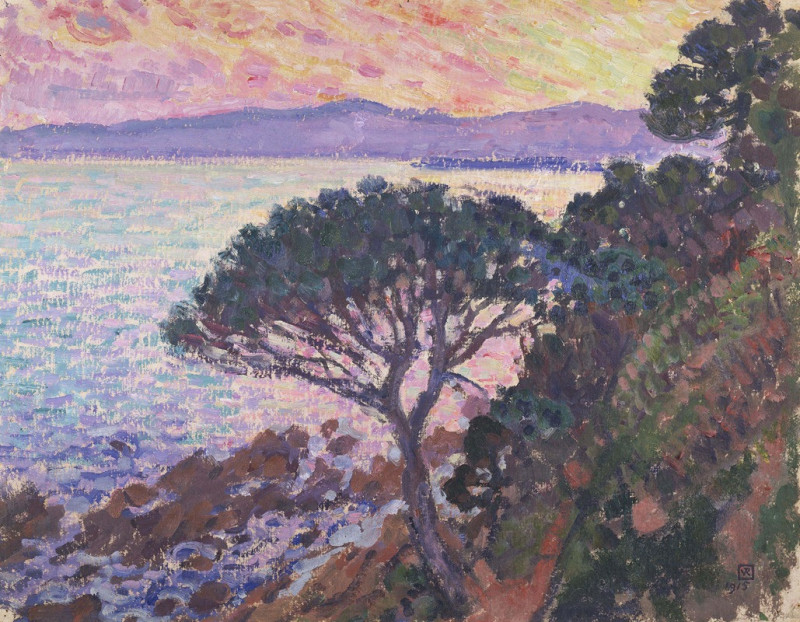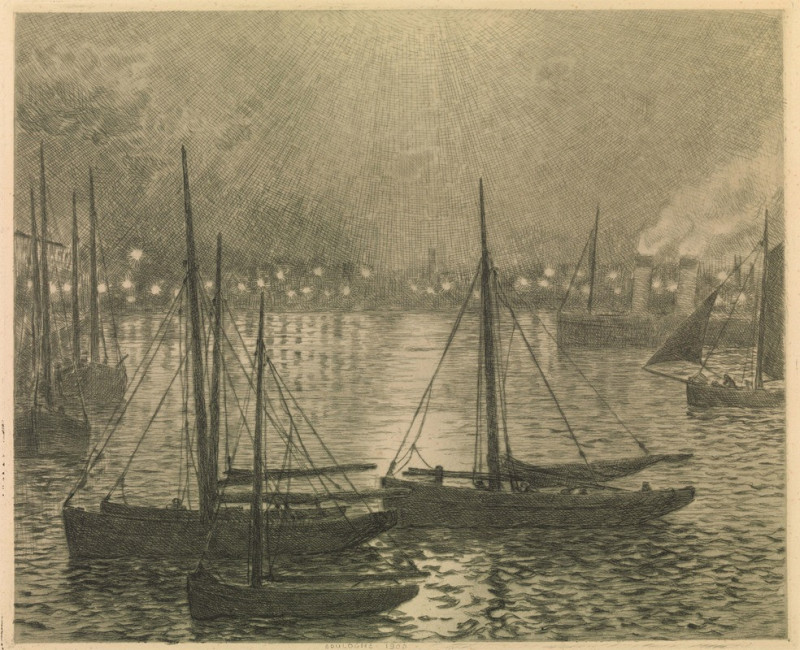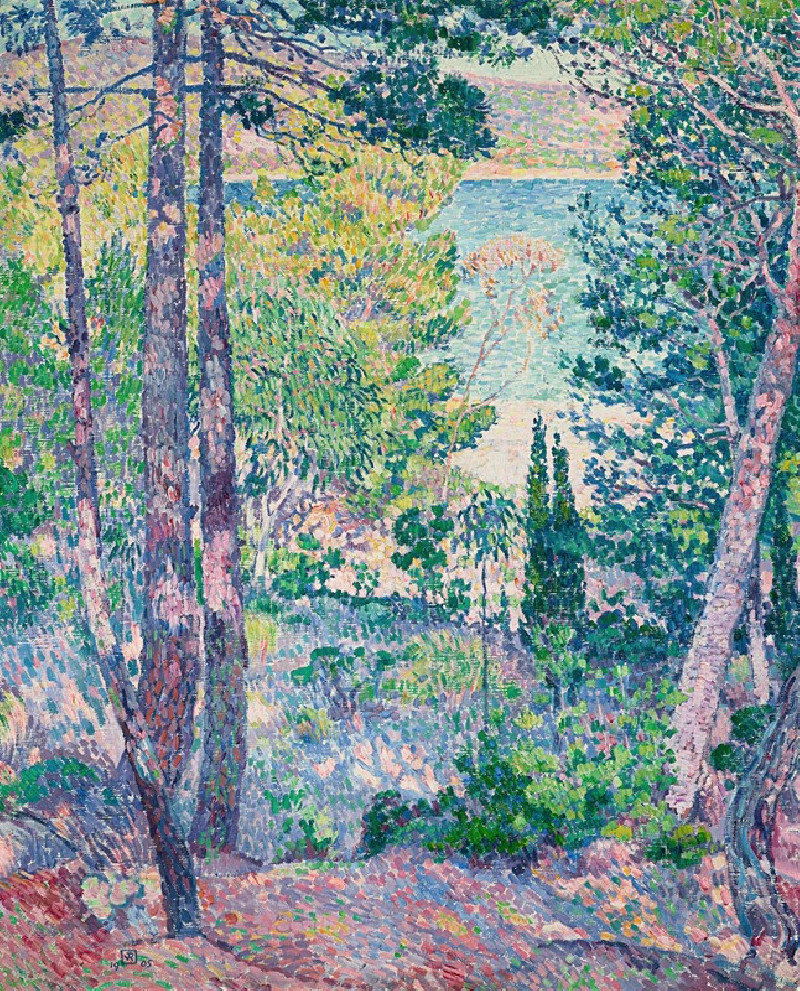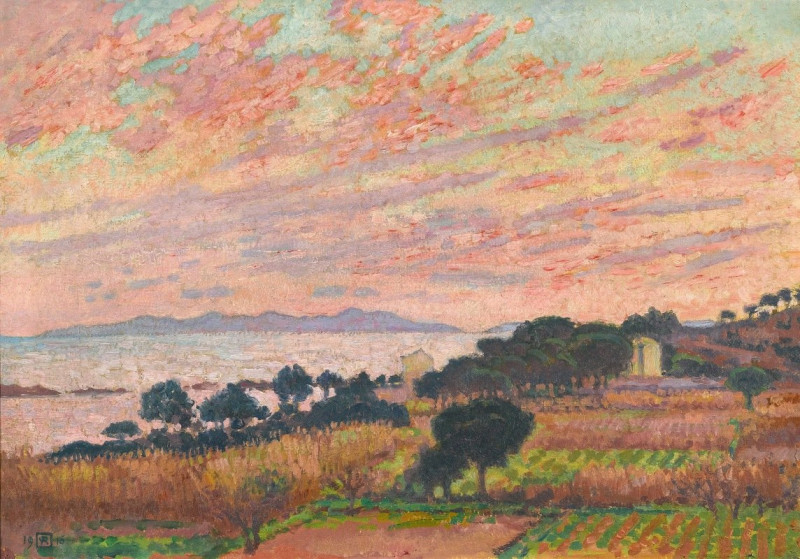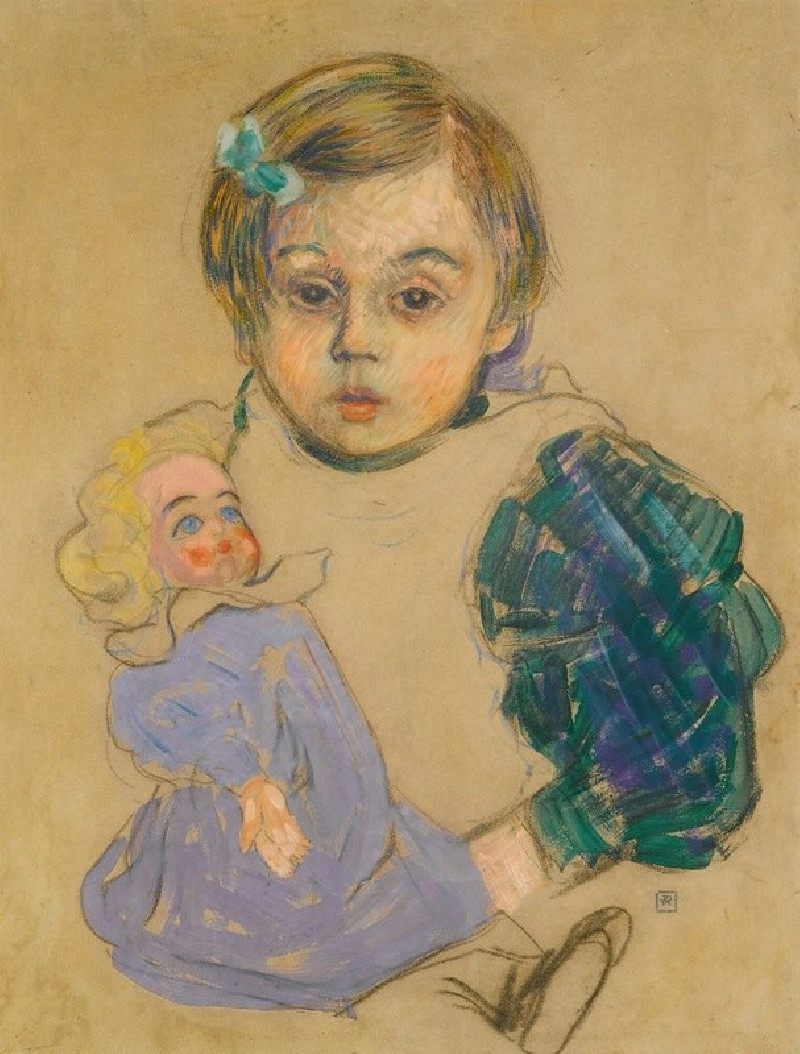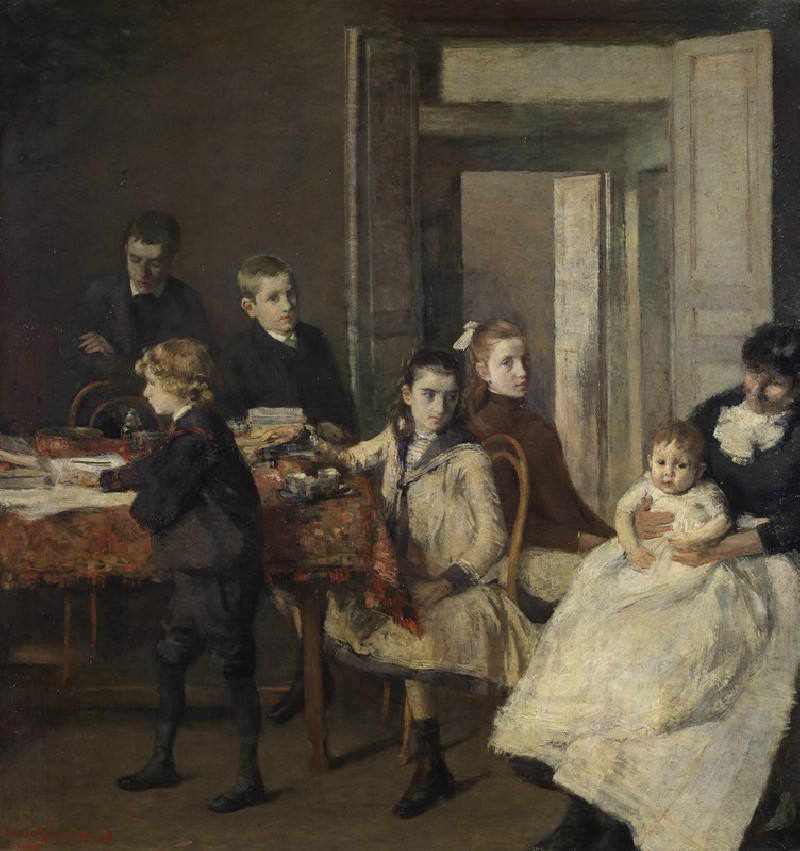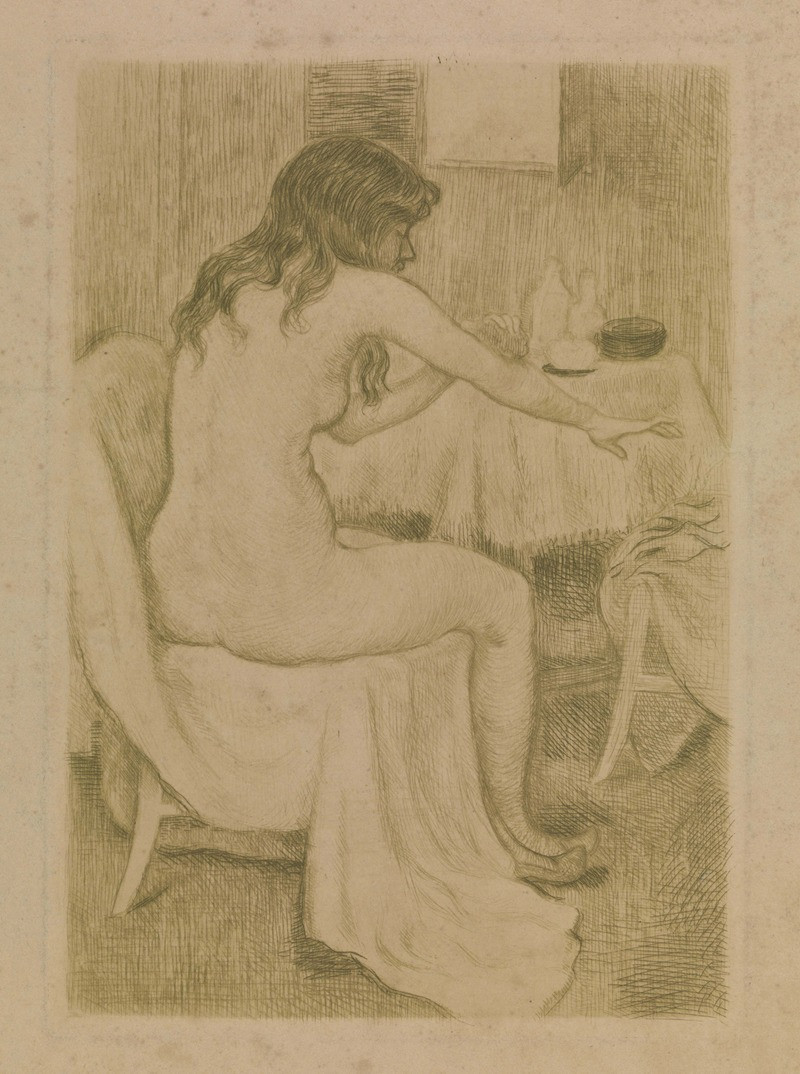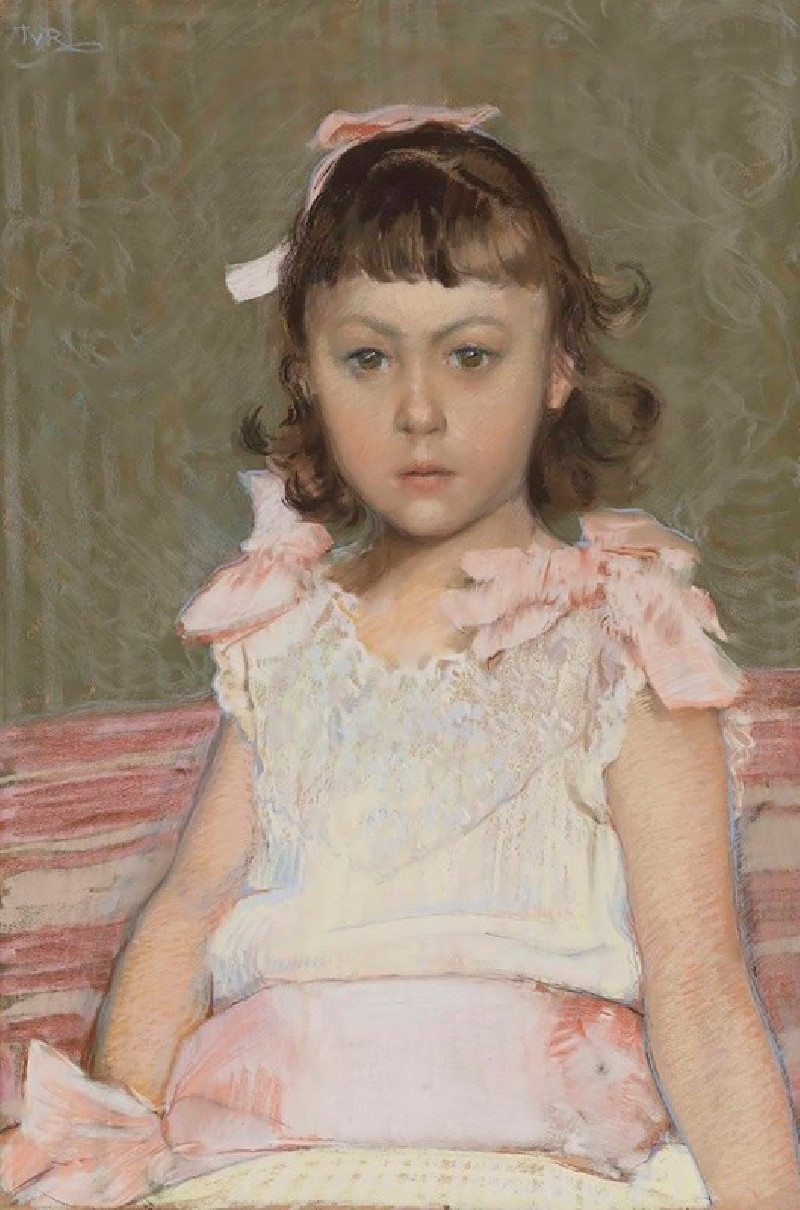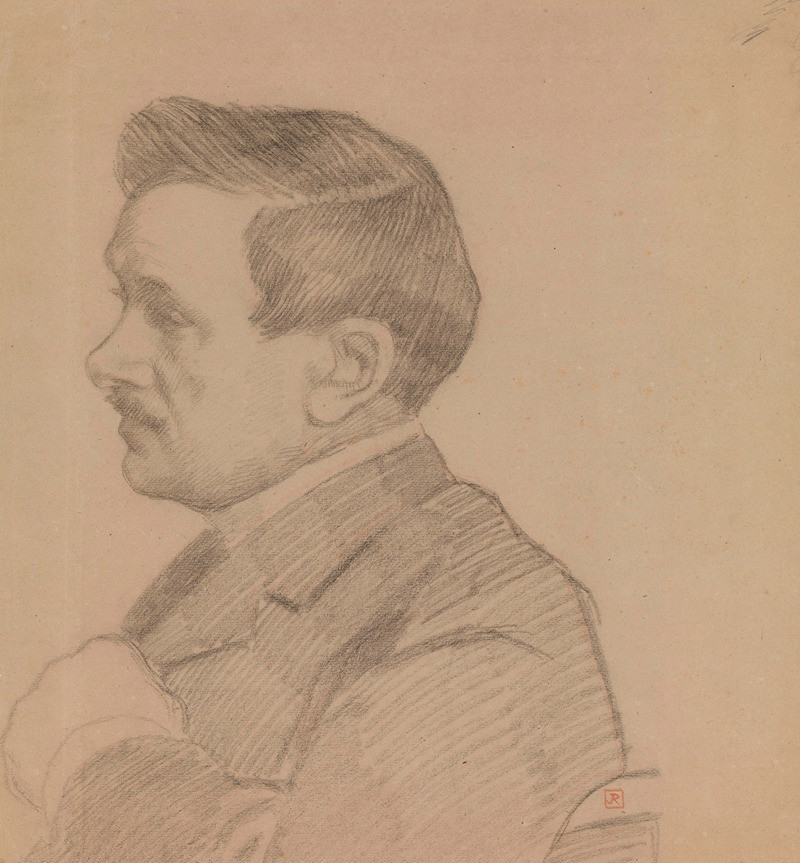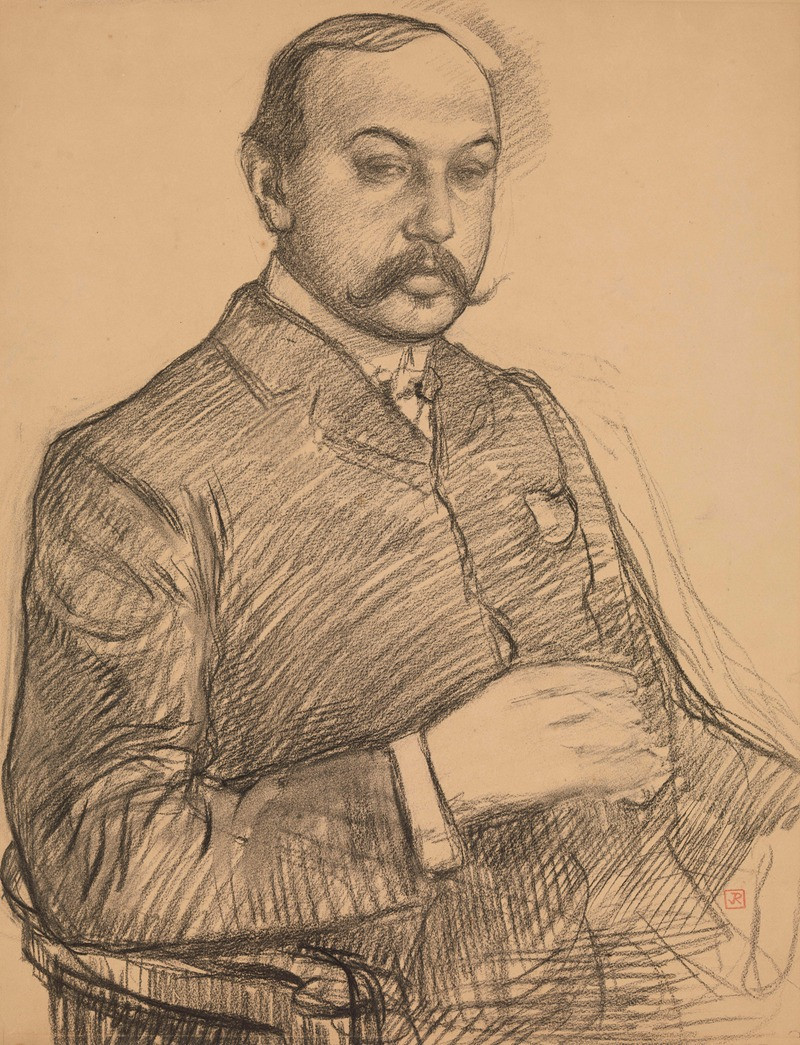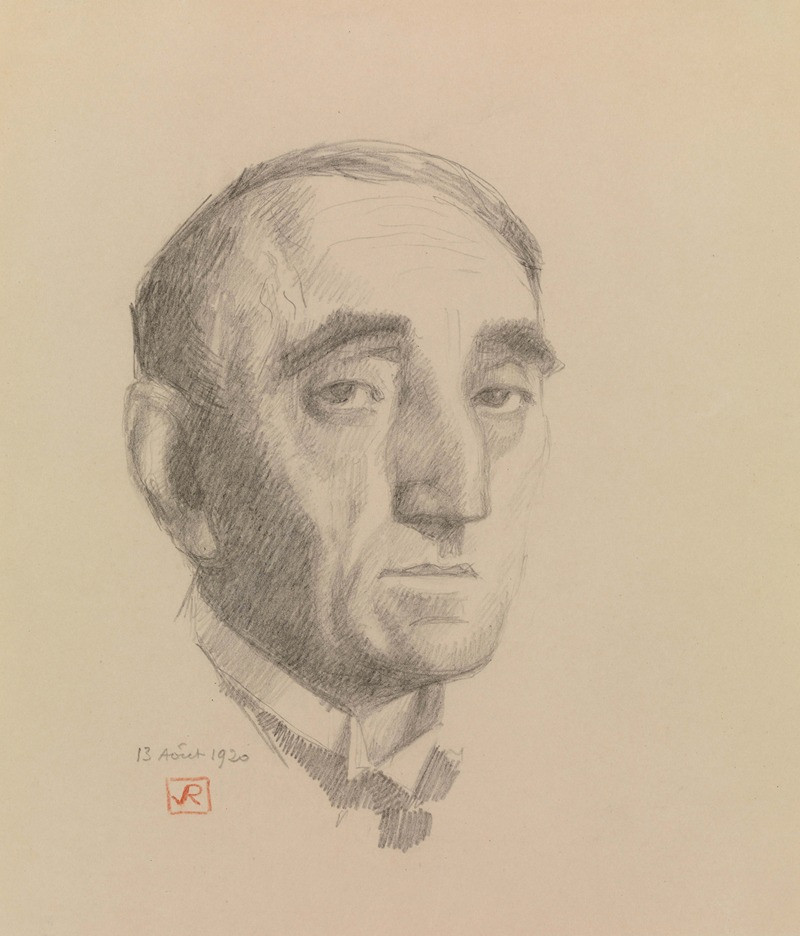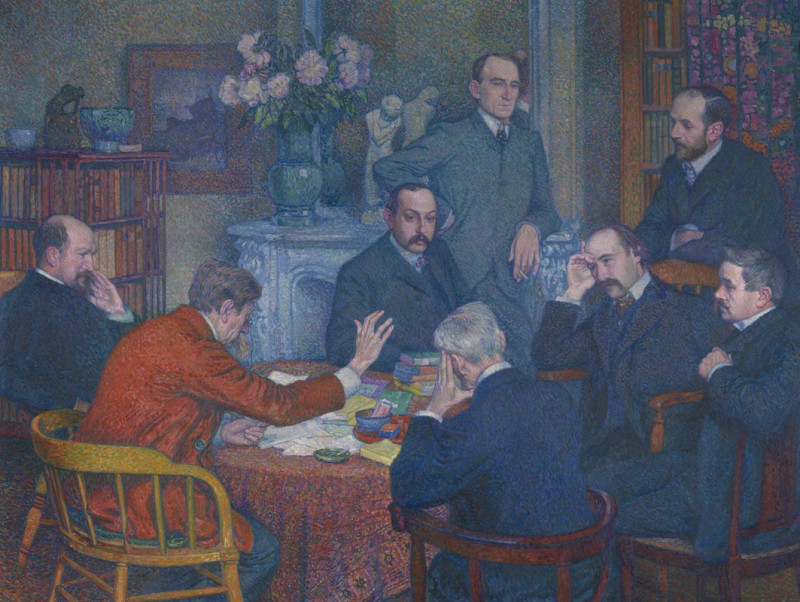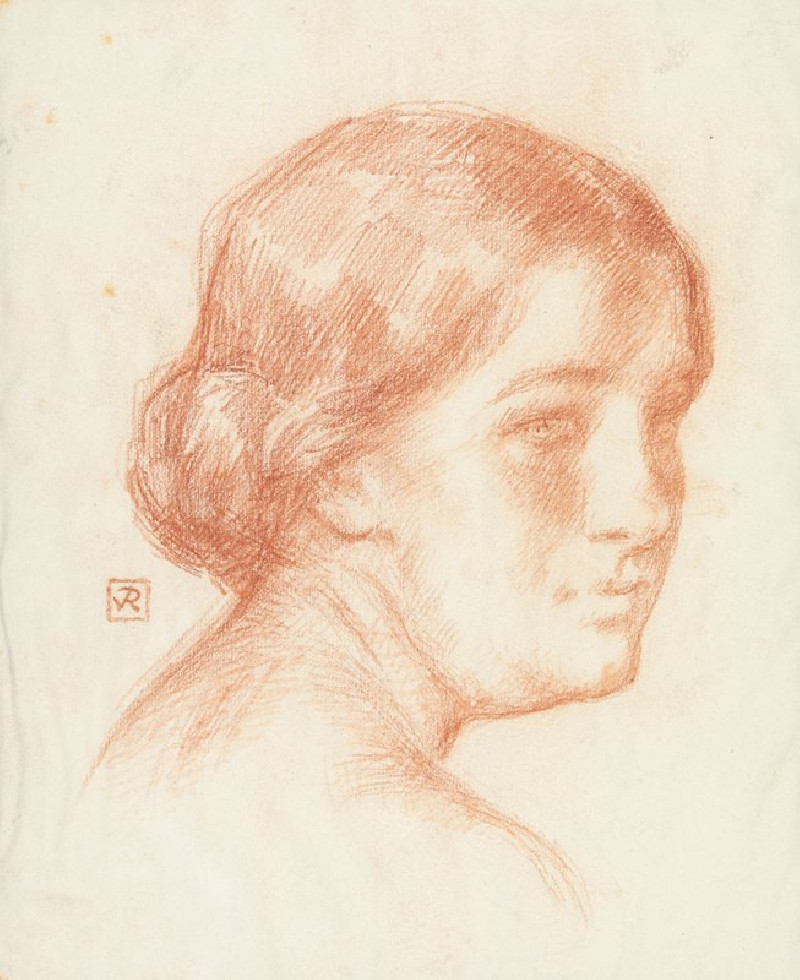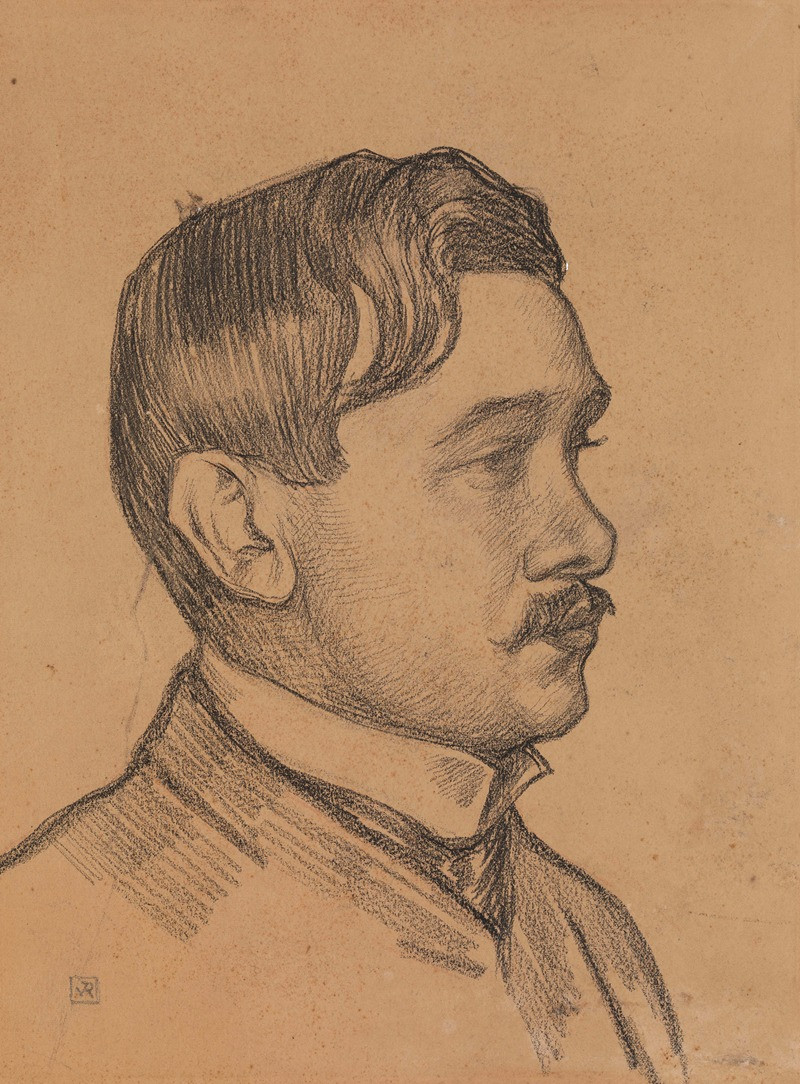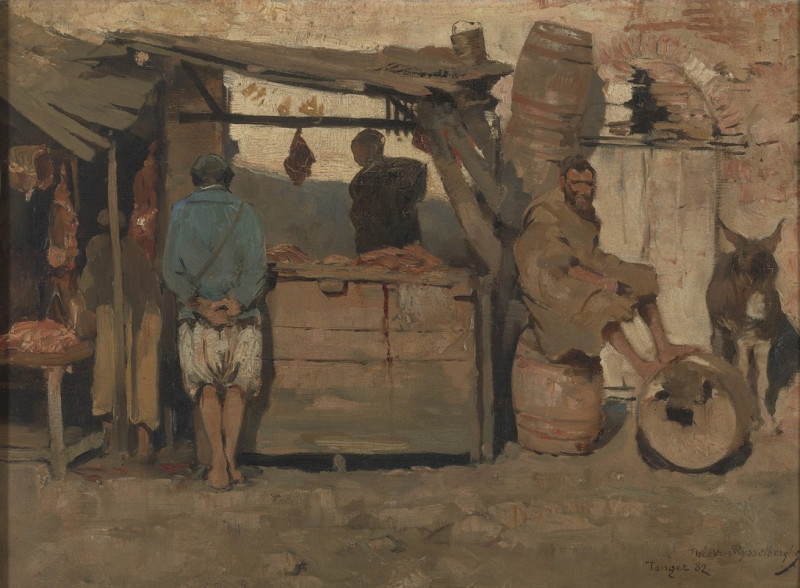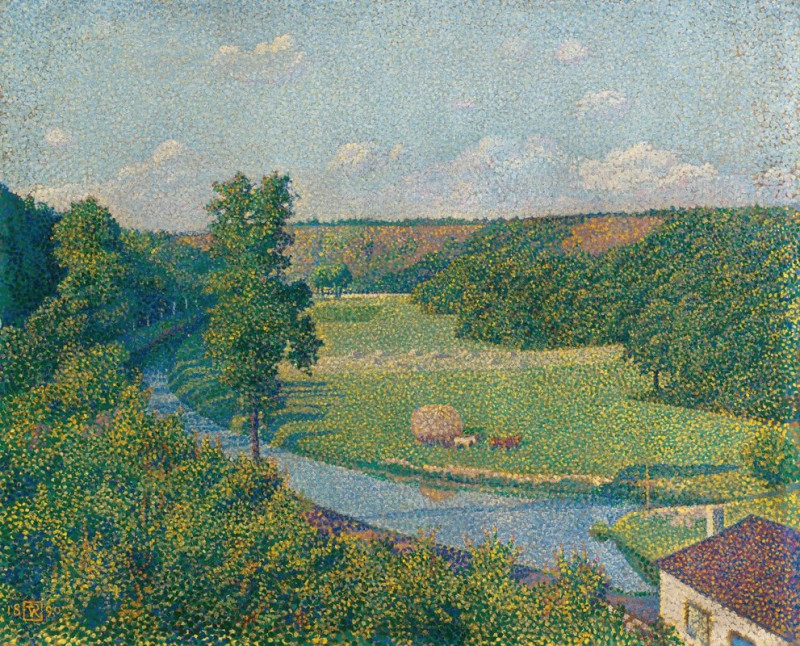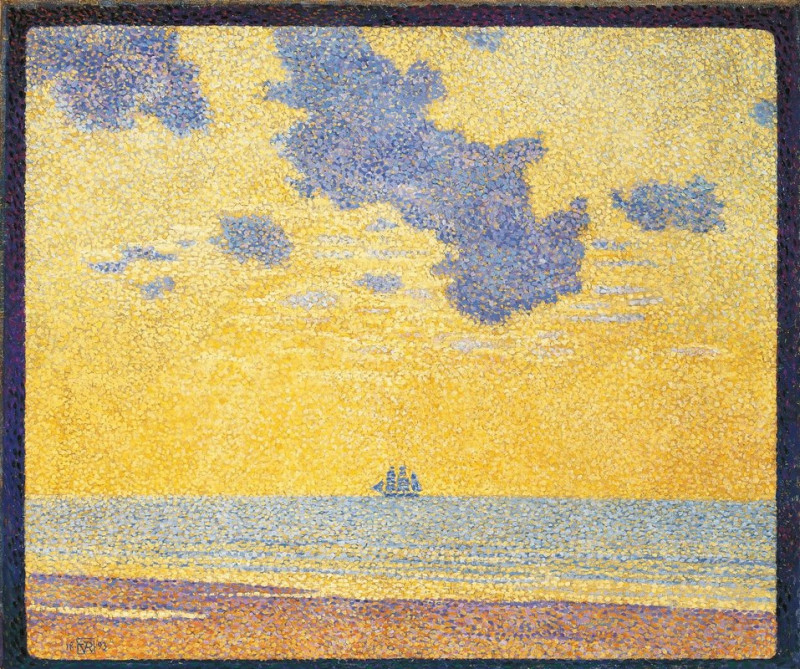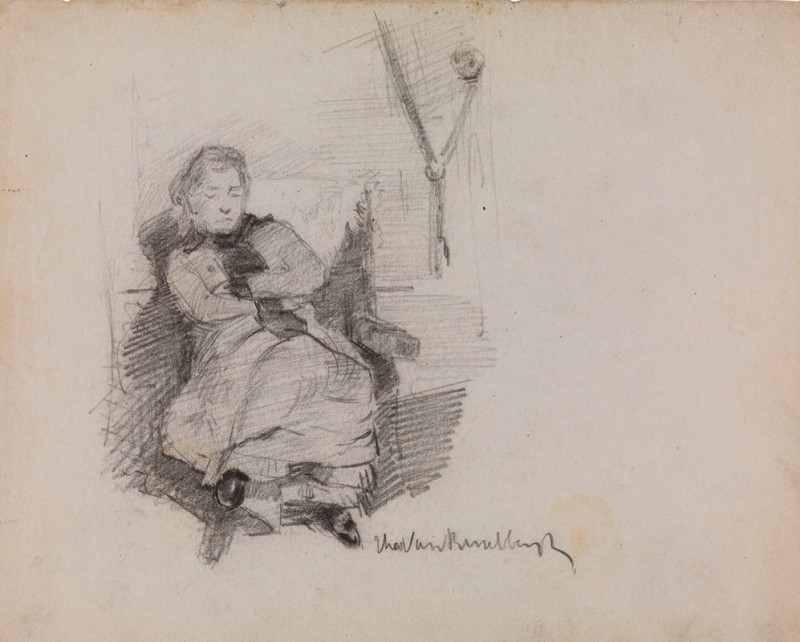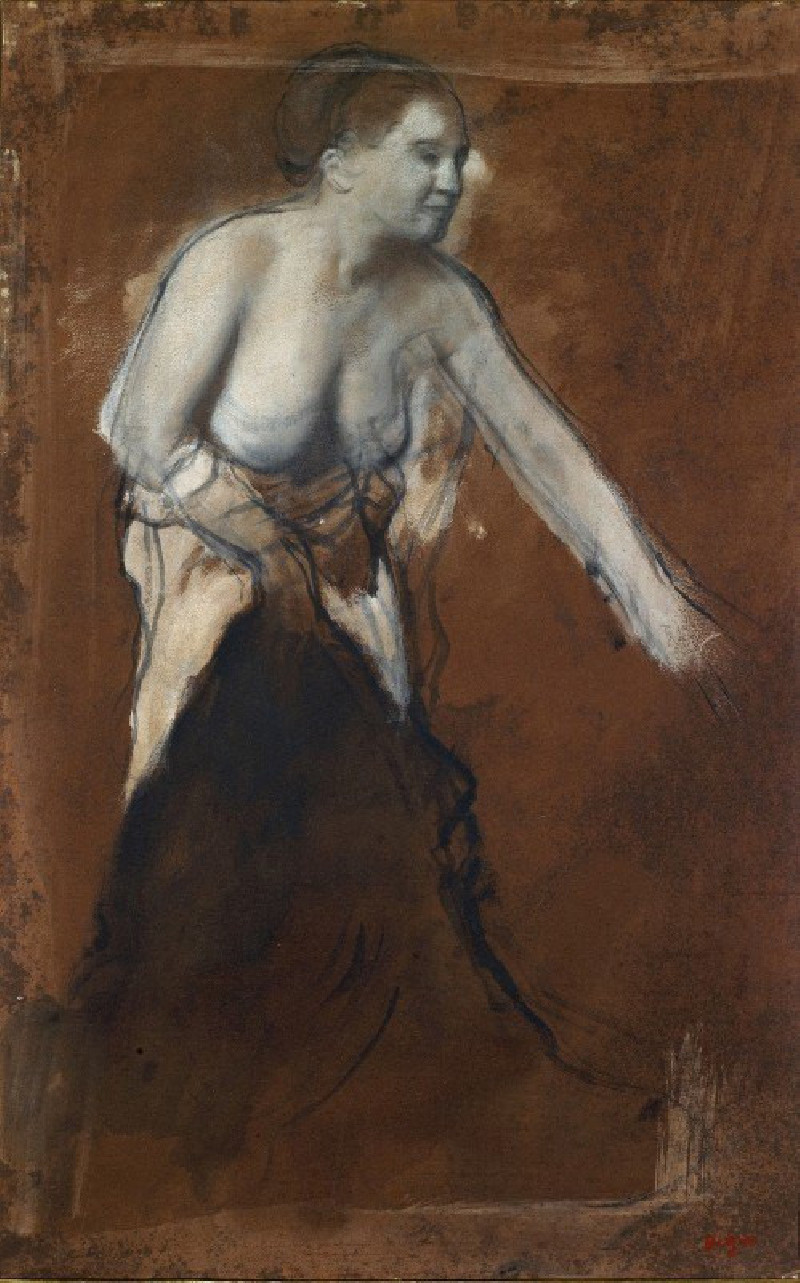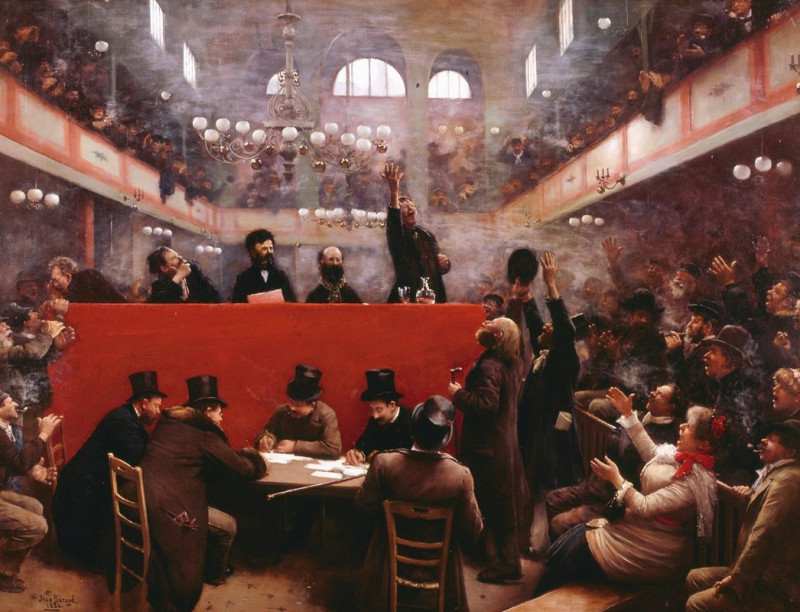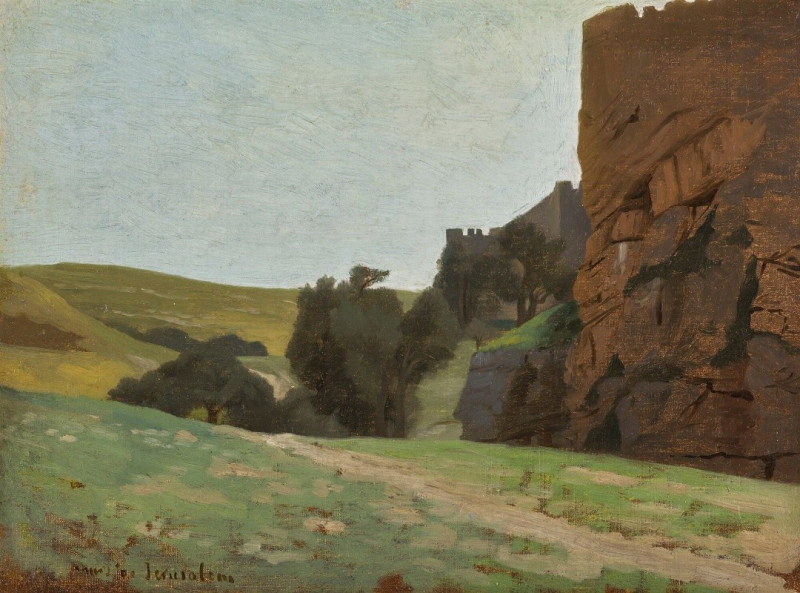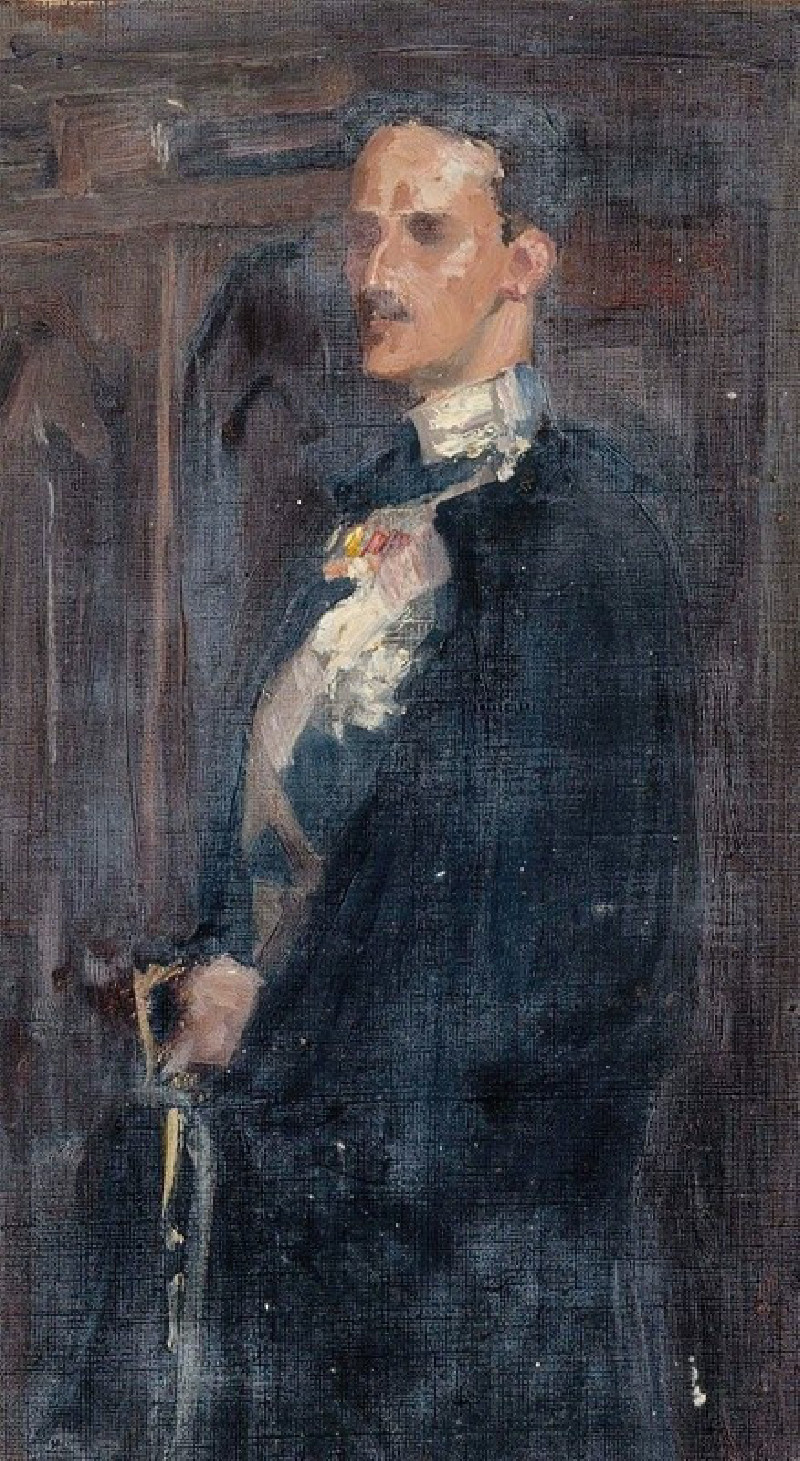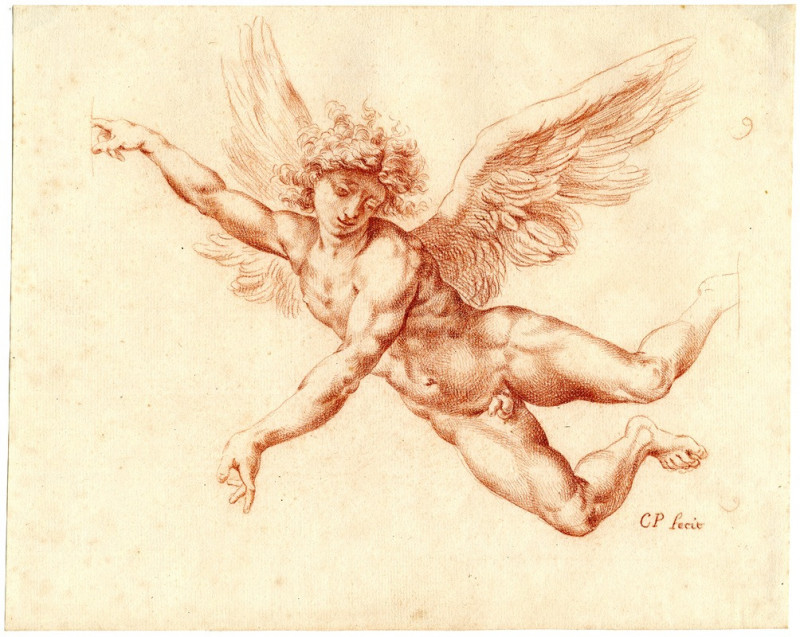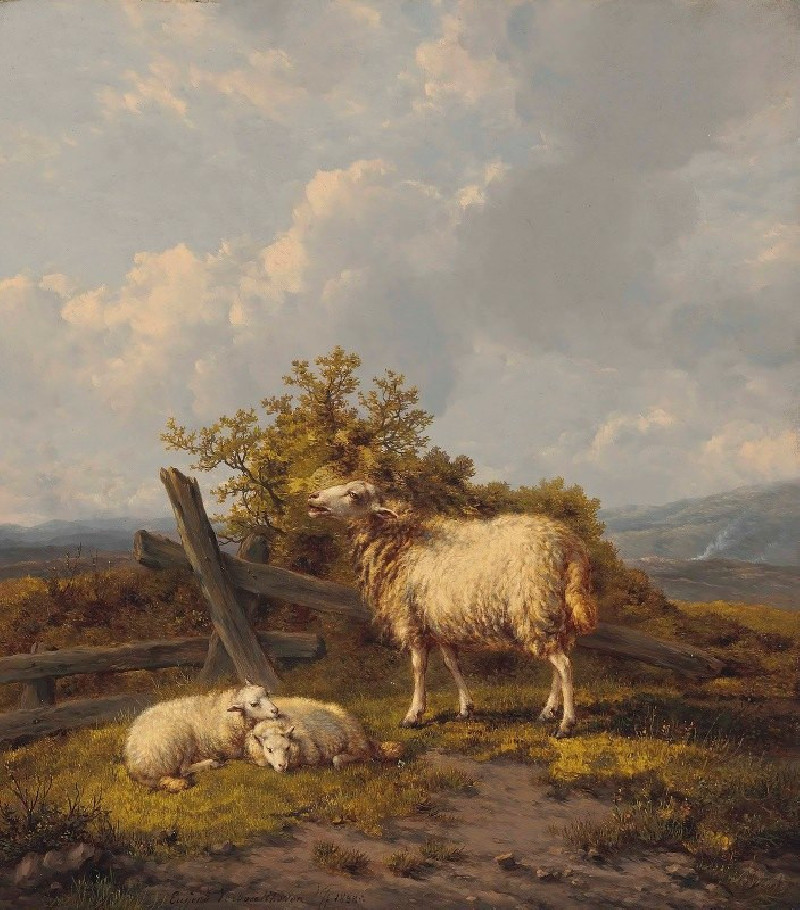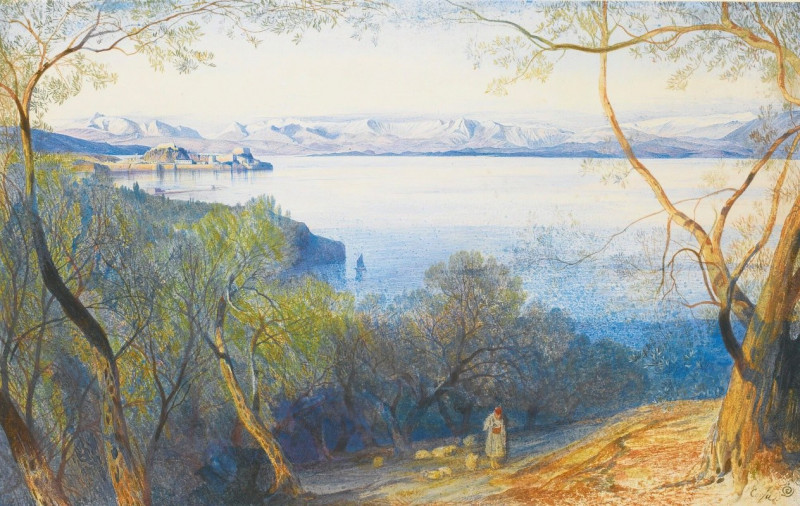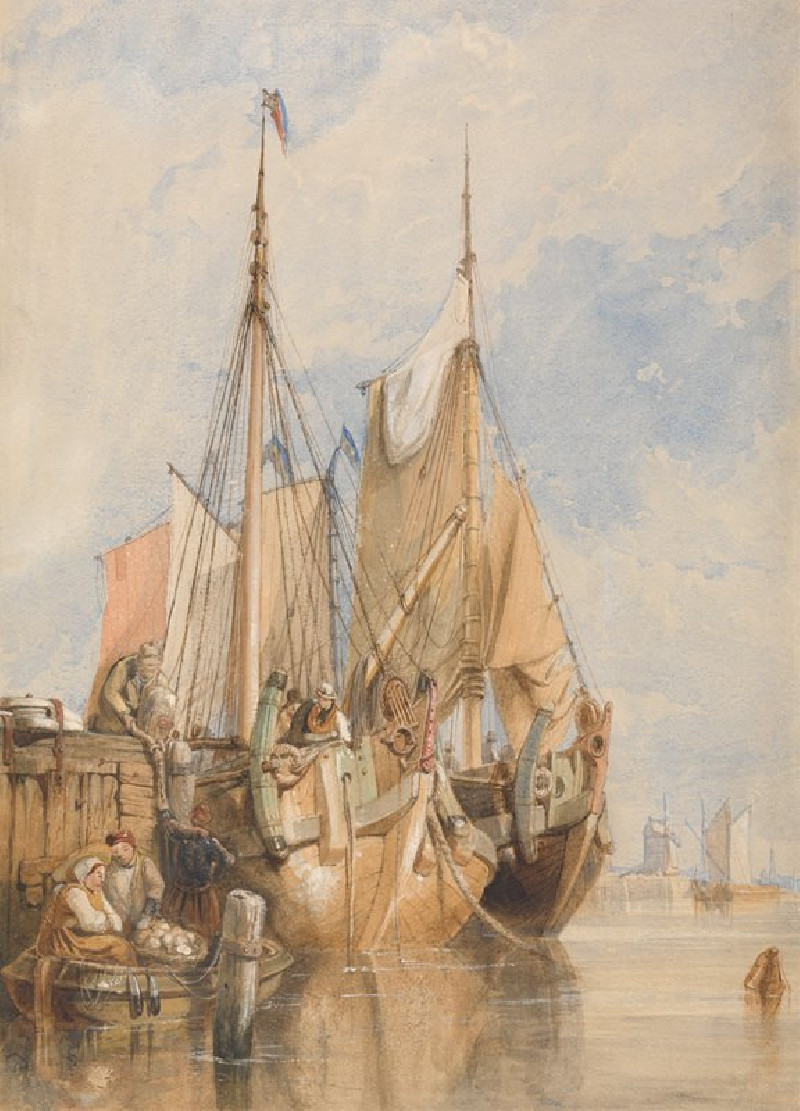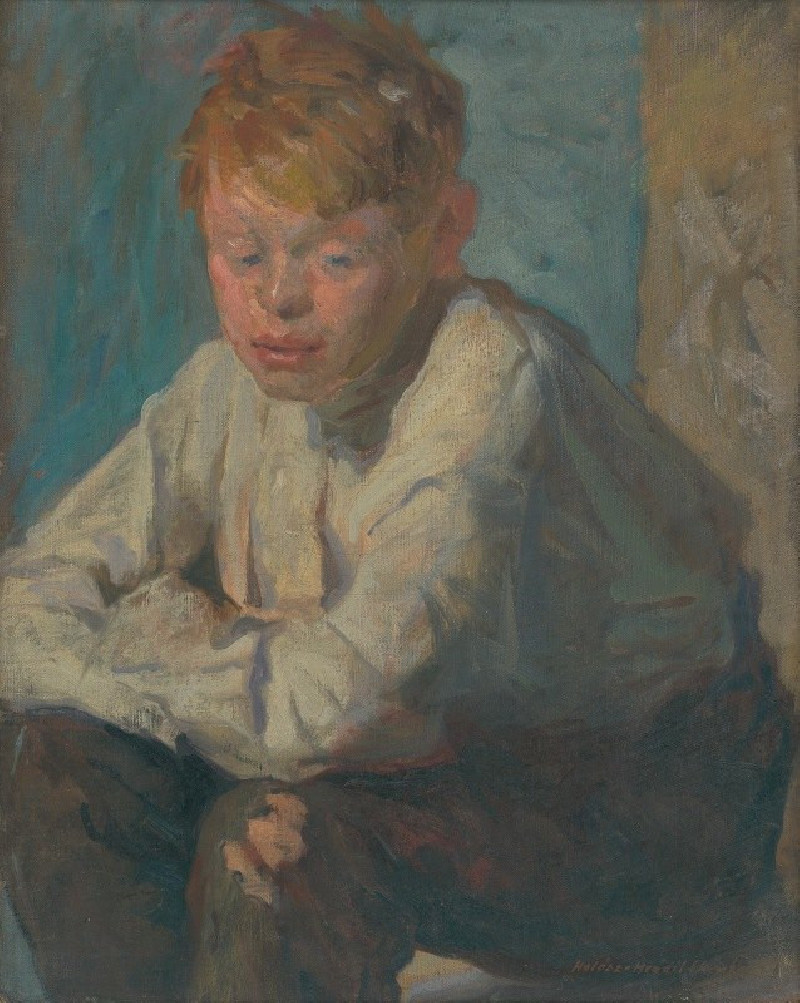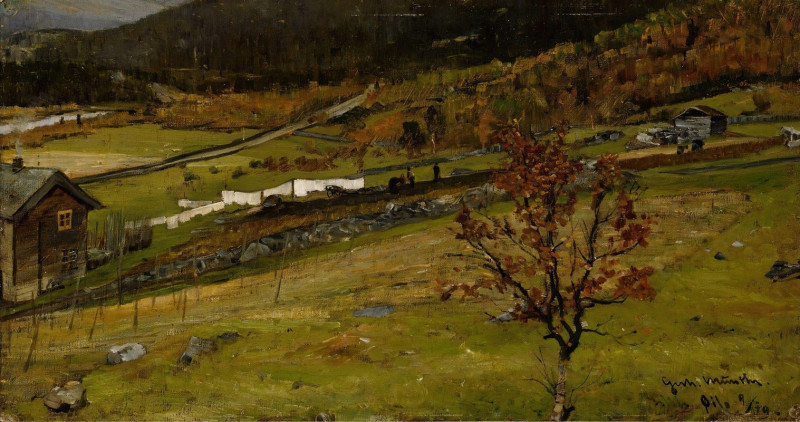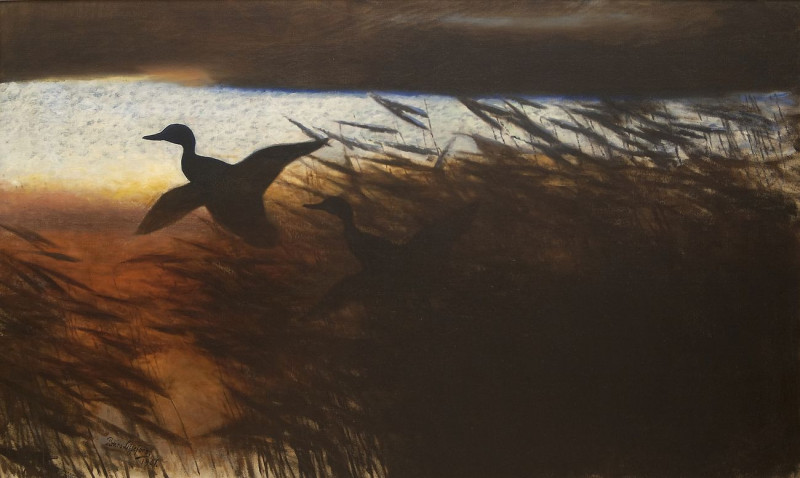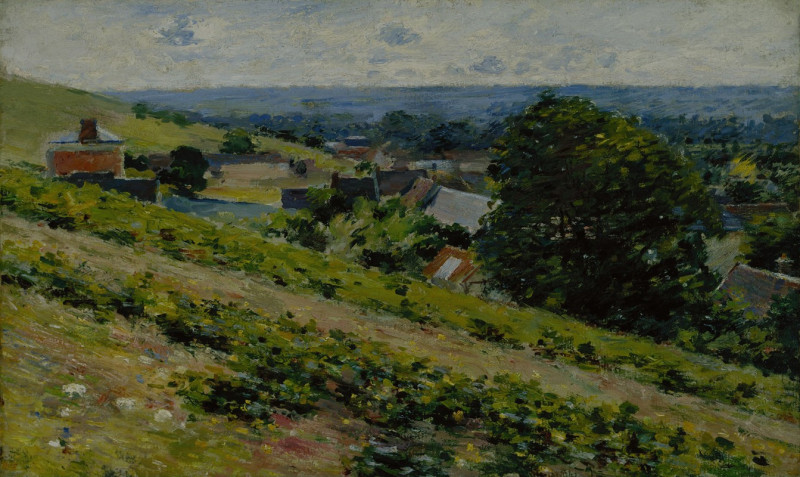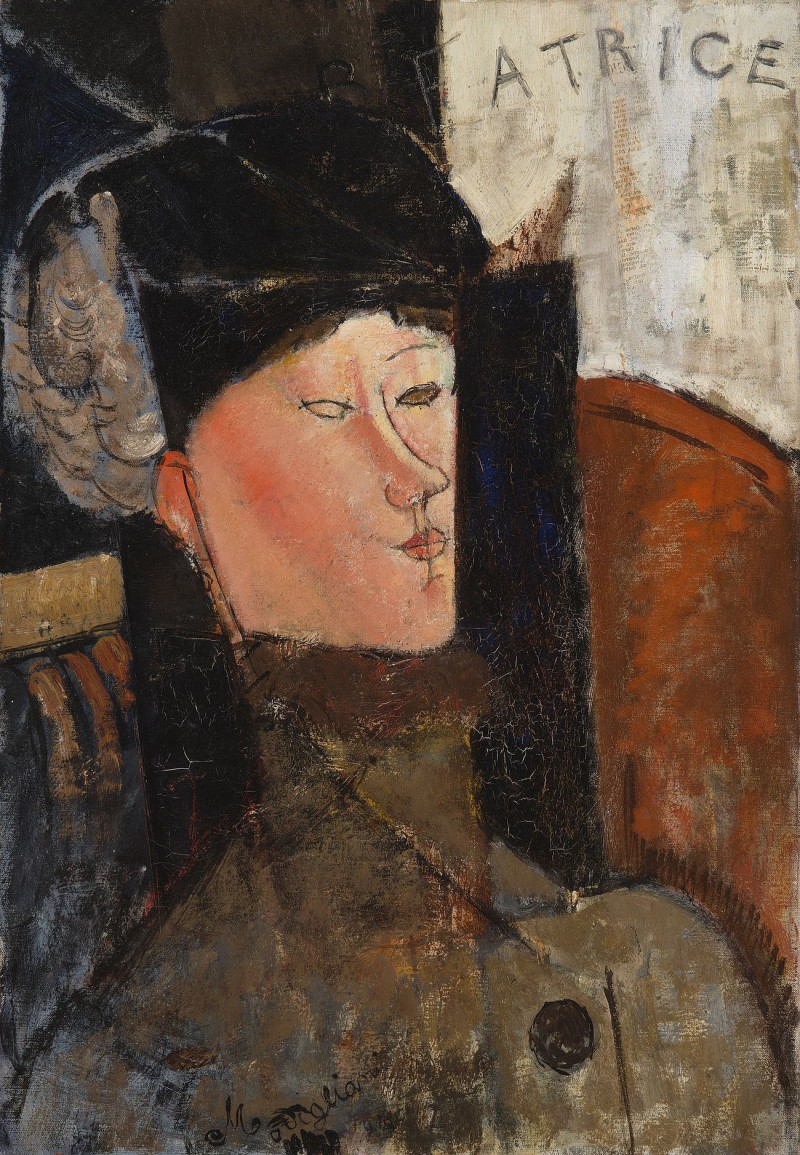Portrait D’enfant (1899)
Technique: Giclée quality print
Recommended by our customers
More about this artwork
Theo van Rysselberghe's painting "Portrait D'enfant" (1899) is a compelling example of the artist's fascination with portraiture and his mastery in utilizing the Neo-Impressionist technique. This evocative work captures a young child in a reflective pose, their gaze slightly averted, which imbues the portrait with a sense of introspective tranquility.The child, likely of tender age, is dressed in a deep blue garment with a soft, white collar that brightens the composition. Rysselberghe's brushwork is meticulous; the texture of the clothing and the smoothness of the child's skin are rendered through fine and precise strokes. The background, a tapestry of warm greens and yellows, contrasts subtly with the cool tones of the attire, highlighting the figure delicately.Van Rysselberghe's skill in color harmony and light is evident, as he plays with color gradation and contour lines to build volume and depth without sacrificing the unity of the surface. This painting not only showcases the artist’s technical prowess but also offers a glimpse into the quiet moments of childhood, encapsulating the serenity and innocence of its young subject.
Delivery
Returns
Théophile "Théo" van Rysselberghe was a Belgian neo-impressionist painter, who played a pivotal role in the European art scene at the turn of the twentieth century.
Born in Ghent to a French-speaking bourgeois family, he studied first at the Academy of Ghent under Theo Canneel and from 1879 at the Académie Royale des Beaux-Arts in Brussels under the directorship of Jean-François Portaels.

